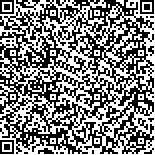| 吴宝磊,周桂龙,黄二江.基于机器学习口腔癌根治术后非计划再手术风险因素分析[J].肿瘤学杂志,2024,30(9):753-760. |
| 基于机器学习口腔癌根治术后非计划再手术风险因素分析 |
| Construction of A Prediction Model of Unplanned Reoperation After Radical Surgery for Oral Cancer Based on Machine Learning |
| 投稿时间:2024-06-12 |
| DOI:10.11735/j.issn.1671-170X.2024.09.B007 |
|
 |
| 中文关键词: 口腔癌 非计划再手术 风险因素 Nomogram模型 机器学习 |
| 英文关键词:oral cancer unplanned reoperation risk factor Nomogram model machine learning |
| 基金项目: |
|
| 摘要点击次数: 496 |
| 全文下载次数: 979 |
| 中文摘要: |
| 摘 要:[目的] 评估口腔癌根治术后非计划再手术的发生率和风险因素。[方法]收集2017年1月至2023年1月治疗的684例口腔癌患者的资料。根据住院期间是否发生非计划再手术分为再手术组78例和未再手术组606例。通过支持向量机、随机森林和Lasso回归对再手术的特征因素进行筛选,并采用多因素Logistics回归分析再手术的危险因素。基于危险因素构建Nomogram模型,并评估其预测效能和临床价值。[结果] 再手术组78例患者中男性、糖尿病史、吸烟、手术部位感染及皮瓣坏死比例均显著性高于未再手术组。再手术组患者的手术时间、凝血酶原时间显著性高于未再手术组。多因素Logistics回归分析表明,手术时间(OR=3.294)、凝血酶原时间(OR=1.850)、血小板(OR=2.008)、男性(OR=0.377)、糖尿病史(OR=0.368)、手术部位感染(OR=0.330)和皮瓣坏死(OR=0.267)是影响再手术的独立危险因素。Nomogram模型的曲线下面积为0.748,校准曲线与理想曲线几乎重叠,决策曲线显示模型在0~76%之间存在获益率。[结论] 手术时间、凝血酶原时间、血小板、男性、糖尿病史、手术部位感染及皮瓣坏死是口腔癌根治术后非计划再手术的独立危险因素。通过构建Nomogram模型可以有效预测患者再手术风险,有助于临床医生采取针对性措施,减少术后并发症。 |
| 英文摘要: |
| Abstract:[Objective] To investigate risk factors for unplanned reoperation following radical surgery for oral cancer and to construct a prediction model based on machine learning. [Methods] The clinical data of 684 patients with oral cancer who underwent surgical treatment from January 2017 to January 2023 were collected. Patients were divided into reoperation group(n=78) and non-reoperation group(n=606). Support vector machine, random forest method and Lasso regression were used to screen for factors associated with reoperation, and multivariate Logistic regression analysis was employed to identify independent risk factors. A Nomogram model was constructed based on these risk factors, and its predictive efficacy and clinical value were assessed. [Results] The reoperation group had significantly higher proportion of patients with male, history of diabetes, smoking, surgical site infection and flap necrosis compared to the non-reoperation group. Quantitative data showed that the reoperation group also had significantly longer operation times and prothrombin time than that in the non-reoperation group. Multivariate Logistic regression analysis indicated that operation time(OR=3.294), prothrombin time(OR=1.850), platelet(OR=2.008), male(OR=0.377), history of diabetes(OR=0.368), surgical site infection(OR=0.330) and flap necrosis(OR=0.267) were independent risk factors for reoperation. The Nomogram model had an area under the curve of 0.748, and the calibration curve almost overlapped with the ideal curve. The decision curve analysis showed that the model has a benefit rate between 0~76%. [Conclusion] Operation time, prothrombin time, platelet , male, history of diabetes, surgical site infection and flap necrosis are independent risk factors for unplanned reoperations after radical surgery for oral cancer. The constructed Nomogram model can effectively predict the risk of reoperation for patients, which may help clinicians to take targeted measures and reduce postoperative complications. |
|
在线阅读
查看全文 查看/发表评论 下载PDF阅读器 |